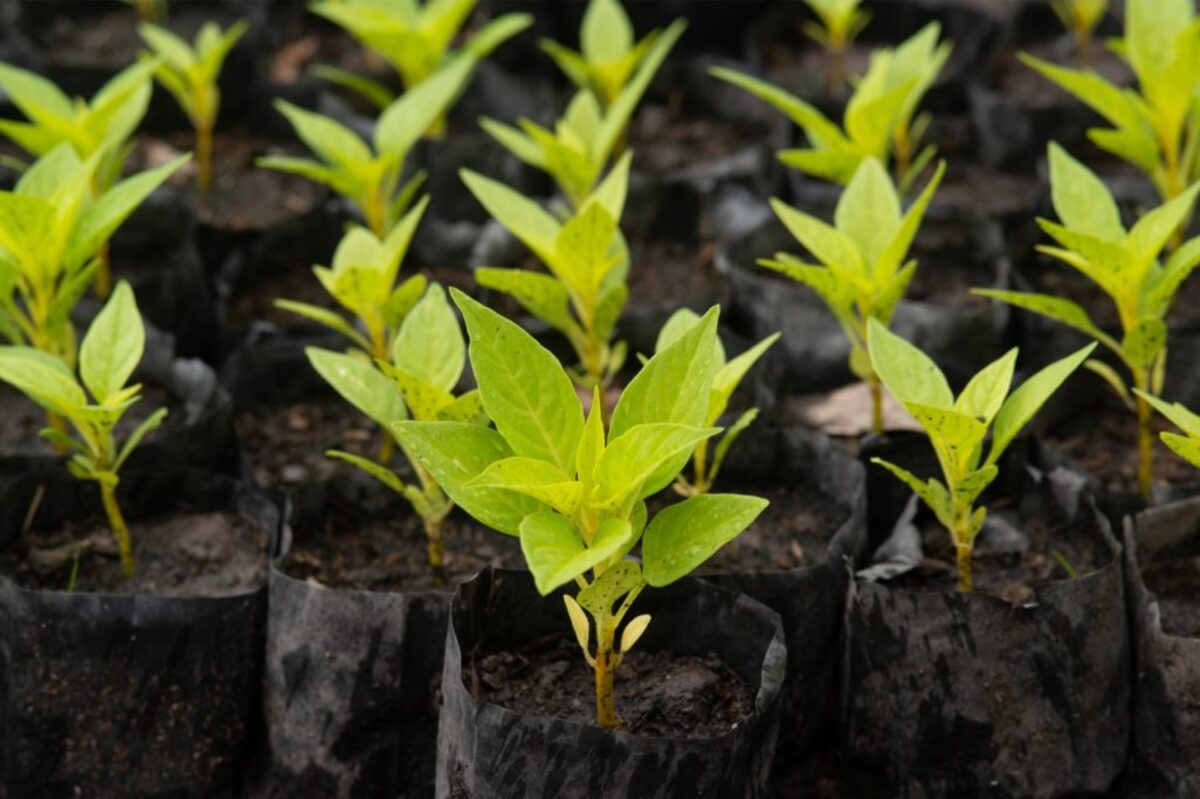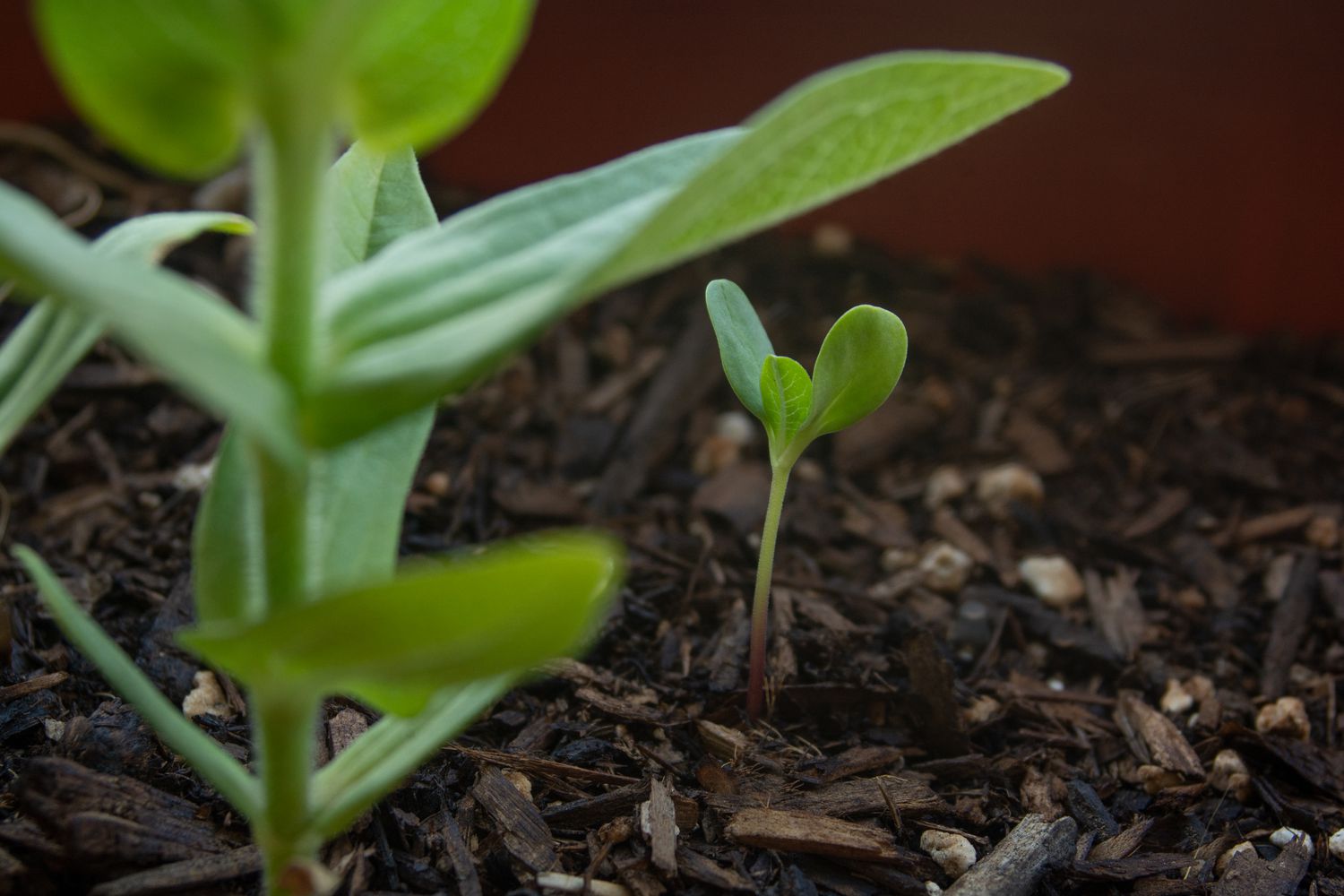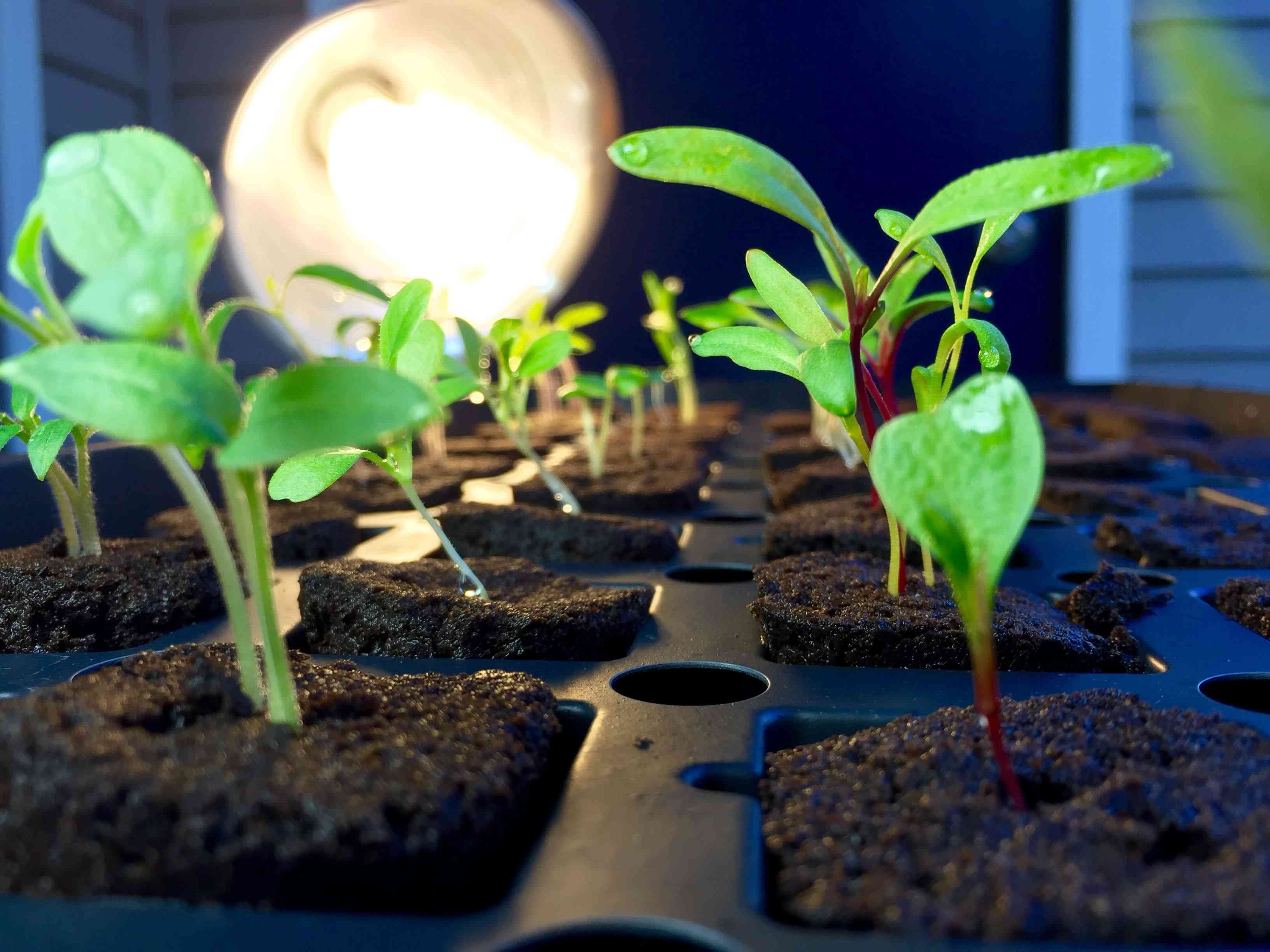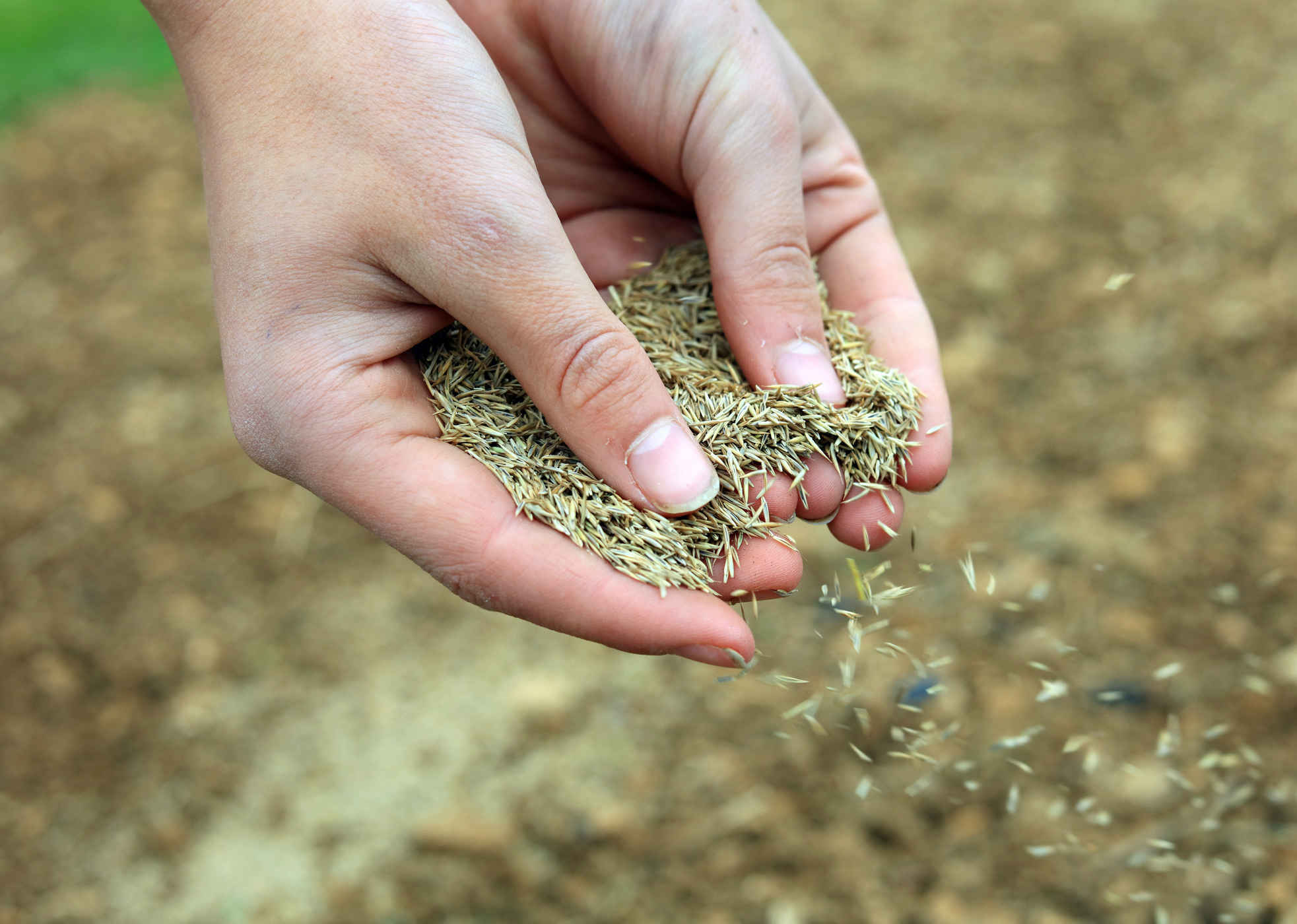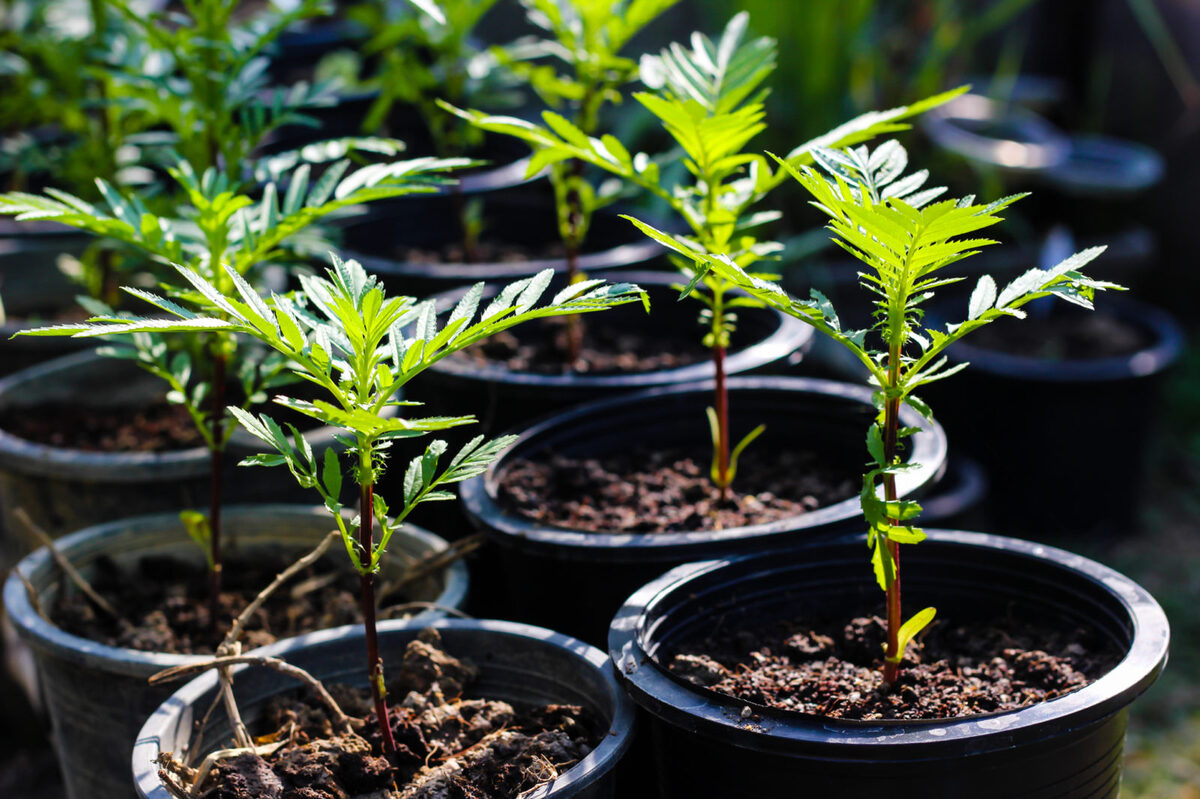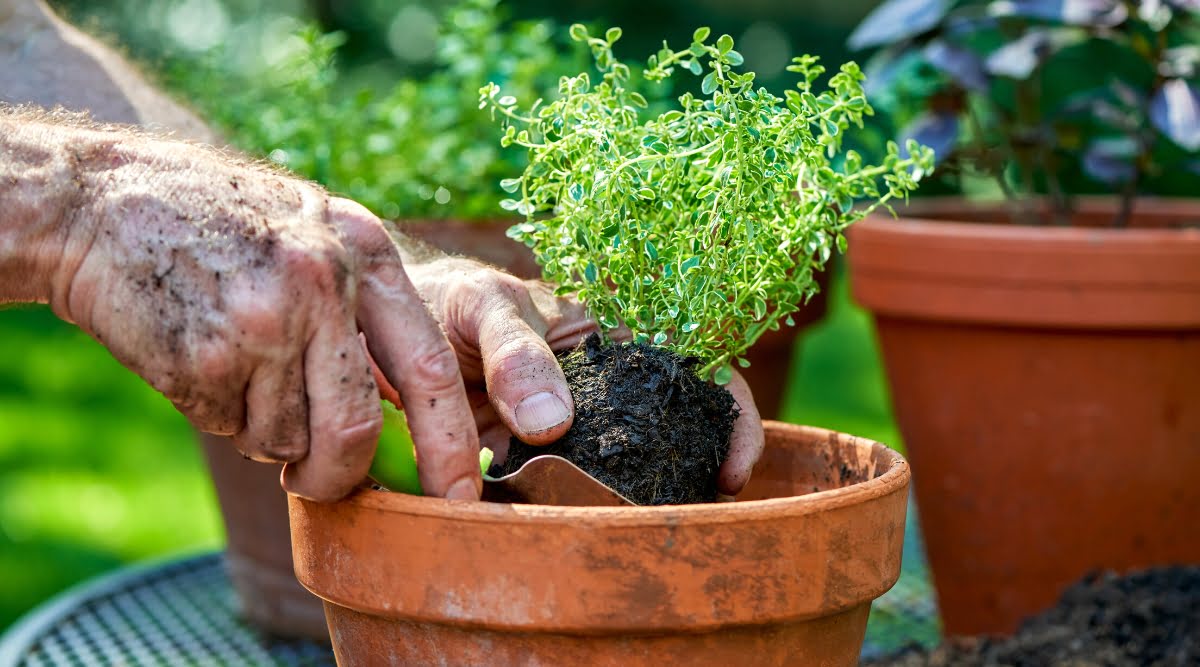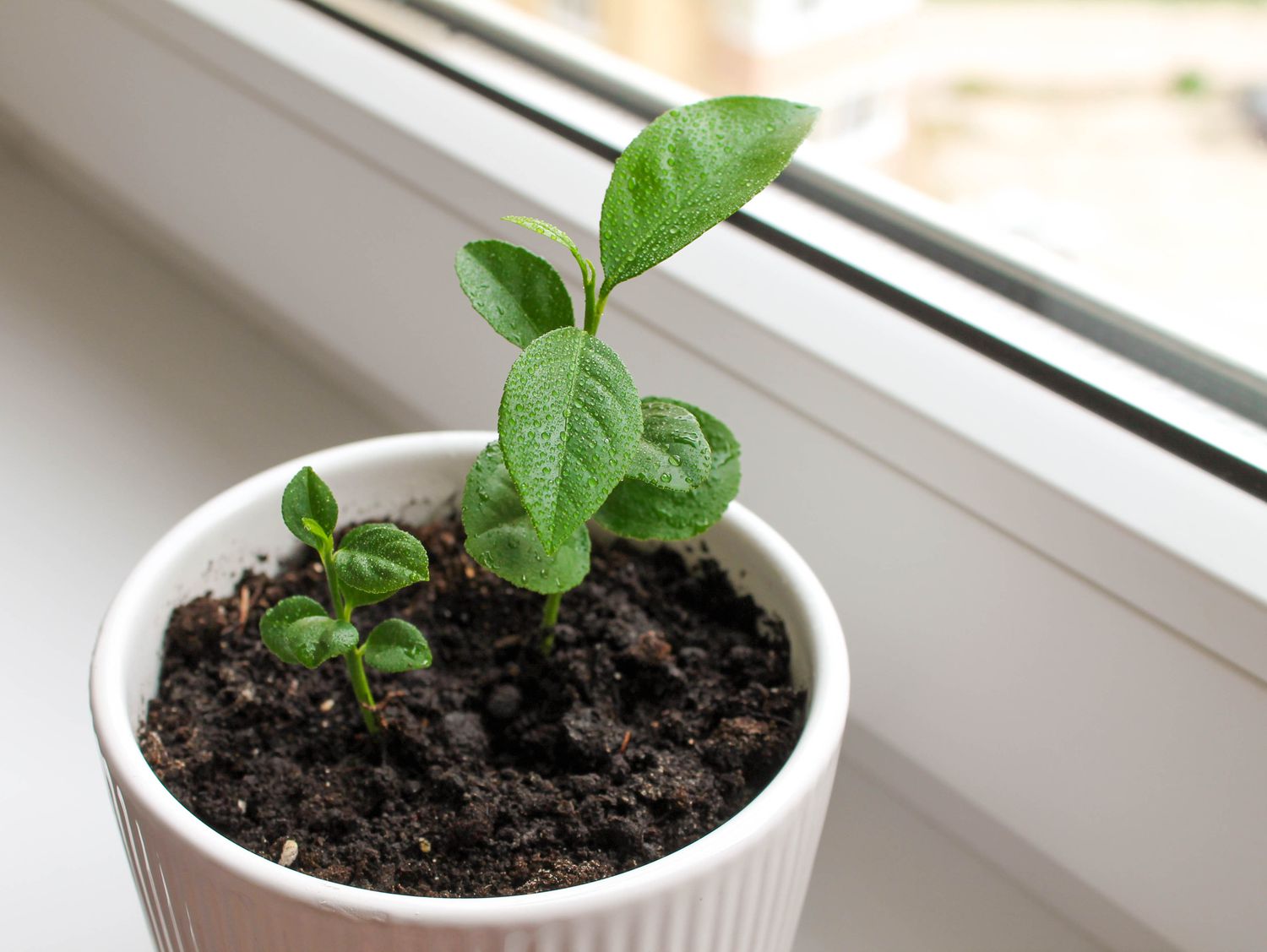Home>Gardening Techniques>Plant Care>When Can You Transplant Perennials
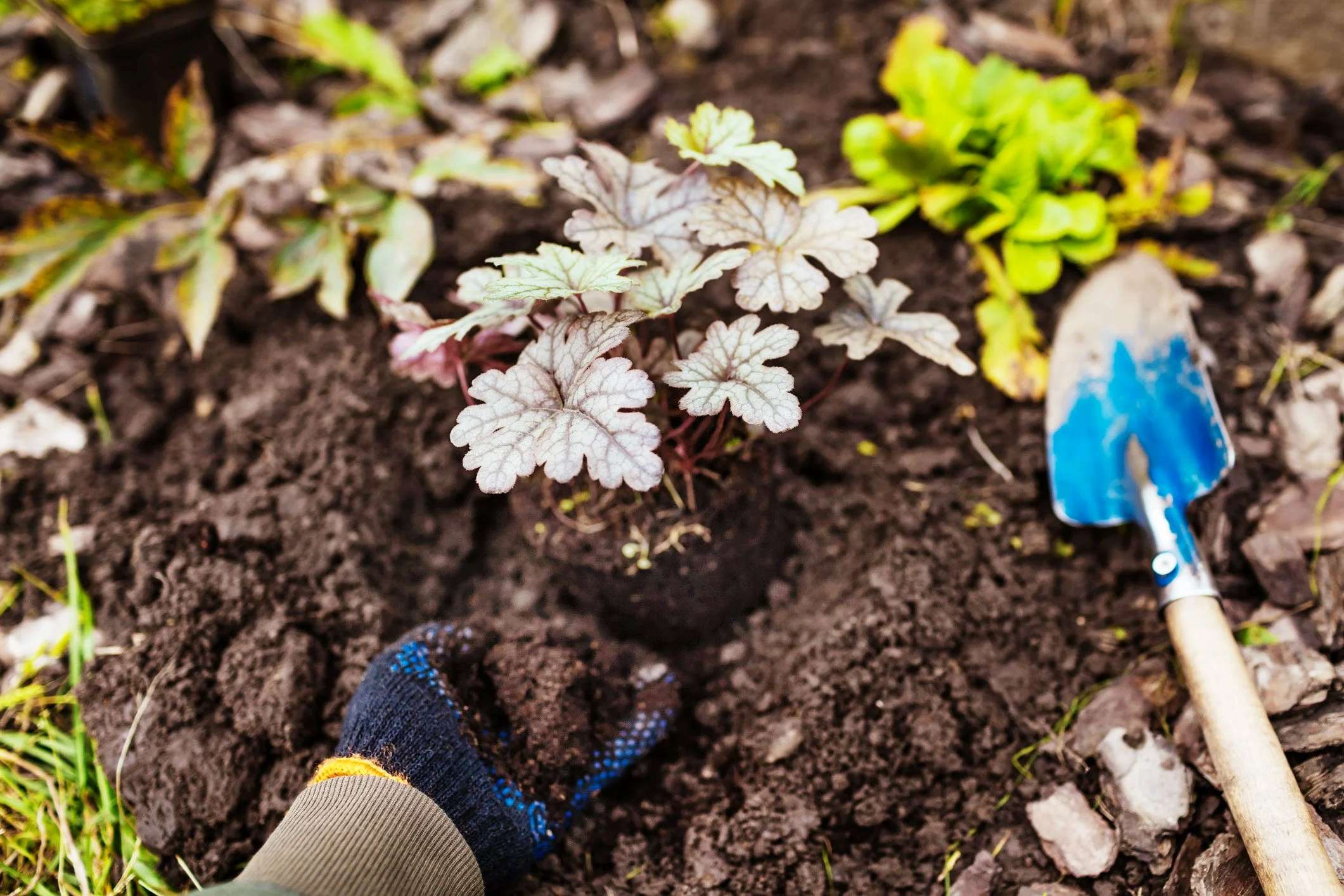

Plant Care
When Can You Transplant Perennials
Modified: January 22, 2024
Learn when to transplant perennials and ensure their proper care with our helpful guide. Find out the best time and techniques for successful plant relocation.
(Many of the links in this article redirect to a specific reviewed product. Your purchase of these products through affiliate links helps to generate commission for Chicagolandgardening.com, at no extra cost. Learn more)
Table of Contents
Introduction
Welcome to the world of perennials, where plants can thrive and delight year after year. If you’re a gardener or plant enthusiast, you know the joy of cultivating a beautiful perennial garden. However, there may come a time when you need to make some changes to your garden layout or give your plants a fresh start. That’s where transplanting perennials comes into play.
Transplanting perennials involves carefully moving established plants from one location to another. Whether you’re looking to rearrange your garden design or simply want to divide and propagate your perennials, transplanting can be an enjoyable and rewarding task.
Before you dive into the process of transplanting, it’s important to understand the nature of perennials. Unlike annuals, which complete their life cycle in one growing season, perennials persist year after year, going dormant during the winter and returning stronger in the spring. This means that transplanting perennials requires proper timing and technique to ensure the plants’ long-term health and success.
In this article, we will guide you through the process of transplanting perennials and provide you with valuable tips and insights. From understanding the factors to consider before transplanting to learning the best time to undertake the task, we’ll cover it all. So, grab your gardening gloves and let’s dive in!
Understanding Perennials
Before we delve into the intricacies of transplanting perennials, it’s important to have a solid understanding of these remarkable plants. Perennials are plants that live for more than two years, with many varieties lasting for several decades. Unlike annuals, which complete their life cycle in one growing season, perennials have a longer lifespan and continue to grow and bloom year after year.
Perennials come in a diverse range of shapes, sizes, colors, and textures, offering endless options for creating stunning garden landscapes. From vibrant flowers to lush foliage, perennials can provide year-round beauty and create breathtaking focal points in your garden.
One of the key characteristics of perennials is their ability to go through a period of dormancy during the winter months. This dormancy allows them to conserve energy and survive harsh weather conditions. As the temperatures warm up in spring, perennials start to emerge from their winter slumber, sending up new shoots and blossoms.
Another noteworthy aspect of perennials is their ability to grow and spread over time. Many perennials have underground structures such as rhizomes, tubers, or bulbs that aid in their propagation. This natural ability to multiply makes them suitable candidates for dividing and transplanting.
When it comes to selecting perennials for your garden, it’s important to consider factors such as sunlight requirements, soil conditions, and climate suitability. Some perennials thrive in full sun, while others prefer shade or partial shade. Similarly, certain perennials are adaptable to various soil types, while others have specific soil preferences. Additionally, different perennials have different hardiness zones, indicating their ability to survive in specific climates.
Understanding the specific needs and characteristics of the perennials in your garden is crucial when it comes to successful transplanting. By taking the time to familiarize yourself with their growth habits, preferences, and requirements, you can ensure a smooth and successful transition when it’s time to move them to a new location.
Factors to Consider Before Transplanting Perennials
Transplanting perennials is a delicate and intricate process that requires careful planning and consideration. Before you start digging up your beloved plants, it’s important to take certain factors into account to ensure their successful relocation and continued growth. Here are some key factors to consider before transplanting perennials:
- Plant Health: The overall health of the perennial plays a significant role in transplant success. Look for signs of disease, pest infestation, or nutrient deficiencies. It’s advisable to avoid transplanting sick or weak plants as they may struggle to recover in a new location.
- Maturity and Size: Consider the maturity and size of the perennial before deciding to transplant. Younger plants tend to handle transplanting more easily than more established ones. Additionally, it’s important to assess the size of the plant in relation to the new location to ensure it has enough space to grow and thrive.
- Season: The season in which you choose to transplant your perennials is crucial. It’s generally recommended to transplant perennials during their dormant period in late fall or early spring when they are not actively growing and are more resilient to the stress of being uprooted.
- Weather Conditions: Take into account the current and forecasted weather conditions. Transplanting during extreme heat or drought can put the plant under additional stress. Ideally, choose a day with mild temperatures, preferably after a rain shower when the soil is moist and easier to work with.
- Soil Preparation: Adequate soil preparation is essential for the successful transplantation of perennials. Ensure that the new location has well-draining soil with the appropriate pH level and nutrient content for the specific needs of the perennial species.
- Transplanting Location: Carefully choose the new location for your perennials. Consider factors such as sunlight exposure, soil composition, and proximity to other plants. Some plants prefer full sun, while others thrive in partial shade. Placing the transplanted perennial in an environment that meets its specific requirements will promote healthier growth.
By taking these factors into consideration, you can increase the chances of a successful transplant and help your perennials thrive in their new location. Remember that each plant is unique, so it’s important to research the specific needs of the perennials you intend to transplant and tailor your approach accordingly.
Best Time to Transplant Perennials
Timing is crucial when it comes to transplanting perennials. Choosing the right season ensures that the plants have the best chance of survival and successful establishment in their new location. While the exact timing may vary depending on the specific perennial species, there are some general guidelines to keep in mind.
The preferred time to transplant perennials is during their dormant period, which is typically in late fall or early spring. During these seasons, the plants are not actively growing, making them more resilient to the stress of transplantation. Transplanting during dormancy also allows the plants to focus on establishing a strong root system before diverting energy into above-ground growth.
Transplanting perennials in late fall, after the first frost but before the ground freezes, can be particularly beneficial. The cooler temperatures help minimize stress on the plants, and the soil is still workable, allowing for easier digging and planting. However, be mindful of the specific hardiness zone of the plant and the local climate, as some perennials may require different timing based on their cold tolerance.
Another prime time for transplanting perennials is early spring, before new growth emerges. This allows the plants to settle into their new location and establish roots before the demands of above-ground growth begin. Spring is also a time when the soil starts to warm up, providing favorable conditions for root development.
It’s important to note that certain perennial species may have individual preferences when it comes to transplant timing. Some plants, such as peonies or irises, prefer to be transplanted in early fall, while others, like daylilies or hostas, respond well to spring transplanting. Researching the specific requirements of your perennials will help determine the ideal time for transplanting.
During the transplanting process, it’s crucial to handle the plants with care to minimize stress and damage. Ensure that the roots are protected and keep the soil around them intact as much as possible. Properly watering the transplants and providing them with appropriate aftercare will support their recovery and establishment in their new home.
By choosing the best time to transplant perennials and following proper techniques, you can increase the likelihood of successful transplantation and enjoy the beauty of your plants in their new location.
How to Transplant Perennials Properly
Transplanting perennials requires careful preparation and execution to ensure the plants’ successful relocation and continued growth. Follow these steps to transplant your perennials properly:
- Plan and prepare: Begin by selecting the new location for your perennials. Consider factors such as sunlight exposure, soil quality, and spacing requirements. Prepare the new planting area by clearing away weeds or unwanted vegetation and loosening the soil.
- Water the plants: It’s important to water your perennials thoroughly a day or two before transplanting. This ensures that the plants are well hydrated and reduces stress during the transplantation process.
- Prepare the hole: Dig a hole in the new planting area that is slightly larger and deeper than the root ball of the perennial. This allows room for the roots to spread out and establish in the new location.
- Remove the plant: Carefully dig around the perimeter of the plant, using a garden fork or shovel to loosen the soil. Lift the plant out of the ground, making sure to keep the root ball intact. Trim any damaged or overgrown roots.
- Transplant: Place the perennial in the prepared hole, ensuring that it is at the same depth as it was in its previous location. Backfill the hole with soil, gently firming it around the roots. Water the newly transplanted perennial to settle the soil and eliminate air pockets.
- Mulch: Apply a layer of organic mulch around the base of the plant, leaving a small space around the stem. This helps to retain moisture, suppress weeds, and regulate soil temperature.
- Provide aftercare: Water the transplanted perennial regularly, especially during the first few weeks when the roots are establishing. Monitor the soil moisture and adjust watering as necessary. Avoid overwatering, as this can lead to root rot. Applying a balanced fertilizer can also help provide nutrients for the plant’s growth.
- Monitor and adjust: Keep a close eye on the transplanted perennial, observing for any signs of stress or complications. Make adjustments as needed, such as providing temporary shade or additional support for tall or floppy plants.
Remember that each perennial species may have specific care requirements, so it’s important to research the individual needs of your plants. By following these general guidelines and providing the necessary care, you can ensure a smooth and successful transition for your perennials.
Aftercare for Transplanted Perennials
After transplanting perennials, proper aftercare is crucial to support their recovery and promote healthy growth in their new location. Follow these tips to ensure the success of your transplanted perennials:
- Watering: Adequate watering is essential for the establishment of transplanted perennials. While you need to provide enough moisture to keep the soil evenly moist, be careful not to overwater, as this can lead to root rot. Monitor the moisture levels regularly and adjust watering accordingly, especially during hot and dry periods.
- Mulching: Apply a layer of organic mulch around the base of the transplanted perennial. Mulch helps conserve soil moisture, suppress weed growth, and regulate soil temperature. However, make sure to leave a small space around the stem to avoid excessive moisture around the crown, which can lead to plant diseases.
- Staking: Some perennials may require staking after transplanting. This is especially true for tall or floppy plants that may need support to prevent them from bending or breaking. Use stakes or plant supports to keep the plants upright and secure them loosely with soft ties or twine.
- Pruning: Trim back any damaged or wilted foliage after transplanting to reduce stress on the plant. However, avoid excessive pruning, as it can further stress the plant. Focus on removing dead or diseased parts and allow the plant to focus its energy on establishing the root system.
- Monitor for pests and diseases: Keep an eye out for any signs of pests or diseases on your transplanted perennials. Insects or diseases can weaken the plants and hinder their recovery. Promptly identify and address any issues through appropriate pest and disease management techniques, such as natural or organic methods.
- Adjusting sunlight exposure: If you have relocated your perennials to a location with different sun exposure, monitor how they adapt. Some plants may require more or less sunlight than they were previously receiving. Observe their response and adjust as needed, providing temporary shade or gradually transitioning them to different light conditions.
- Regular maintenance: Regularly check on your transplanted perennials and remove any weeds or unwanted vegetation that may compete for nutrients and water. Keep the area around the plants clean and well-maintained to prevent any hindrance to their growth.
- Patience: It’s important to remember that transplanted perennials may take some time to fully recover and establish in their new location. Be patient and allow the plants to adjust and acclimate to their new environment. With proper care, they will adapt and flourish in their new home.
By providing the necessary aftercare, you can give your transplanted perennials the best chance of success. Remember to tailor your aftercare routine to the specific needs of your plants and make adjustments as necessary. With time and proper care, your transplanted perennials will thrive and contribute to the beauty of your garden.
Common Mistakes to Avoid During Transplanting
Transplanting perennials can be a delicate process, and there are certain mistakes that can hinder the success and growth of your plants. By being aware of these common mistakes, you can avoid them and increase the chances of a successful transplant. Here are some mistakes to avoid during the transplanting process:
- Transplanting at the wrong time: Timing is crucial when it comes to transplanting perennials. Avoid transplanting during periods of intense heat or drought, as the plants may struggle to establish themselves. Instead, choose the recommended dormant season, such as late fall or early spring, when the plants are more resilient.
- Improper digging: Digging too close to the plant or damaging the root system during the digging process can significantly stress the plant. Take care to dig a wide enough hole to avoid damaging the roots and keep the root ball as intact as possible. Use sharp tools and be gentle while handling the plant.
- Ignoring the needs of the specific perennial species: Each perennial has unique requirements, including sunlight exposure, soil type, and watering needs. Failing to research and understand the specific needs of your perennials can lead to transplanting them into unsuitable conditions, resulting in poor growth or even death. Make sure to educate yourself on the specific requirements of your plants.
- Failure to prepare the new planting area: Neglecting to prepare the new planting area by removing weeds, loosening the soil, and improving its quality can hinder the successful establishment of the transplanted perennials. Proper soil preparation ensures a favorable environment for root development and nutrient uptake.
- Not providing enough water after transplanting: Adequate watering is crucial after transplanting to help the plants establish their roots in the new location. Failure to provide enough water can lead to stress and wilting. Be sure to monitor the soil moisture and water the transplanted perennials regularly, especially during the first few weeks.
- Over-fertilizing: While it may be tempting to provide a nutrient boost after transplanting, over-fertilizing can actually harm the plants. Excessive fertilizer can burn the roots and lead to nutrient imbalances. It’s best to wait a few weeks before applying fertilizer and follow the recommended guidelines for the specific perennial species.
- Not acclimating the plants to their new location: Sudden changes in growing conditions, such as sun exposure or temperature, can shock and stress the plants. It’s important to gradually acclimate the transplanted perennials to their new environment by providing temporary shade or gradually exposing them to different light and temperature conditions.
- Underestimating the size and spacing: Failing to consider the mature size of the perennial and providing adequate spacing can lead to overcrowding and competition for resources. Be sure to research the plant’s eventual size and plan accordingly to ensure each plant has enough space to grow and thrive.
By avoiding these common mistakes and taking the necessary precautions, you can increase the success rate of transplanting perennials and give your plants the best chance to thrive in their new location.
Conclusion
Transplanting perennials can be a rewarding and beneficial endeavor for any gardener or plant enthusiast. By understanding the nature of perennials, considering important factors before transplanting, selecting the best time, executing proper techniques, and providing adequate aftercare, you can ensure the successful relocation and continued growth of your beloved plants.
Remember to research the specific needs and preferences of each perennial species you plan to transplant, as this will help you make informed decisions and tailor your approach accordingly. Proper timing is crucial, with late fall and early spring being ideal for most perennials during their dormant period.
During the transplanting process, handle the plants with care to minimize stress and damage. Preparing the new planting area and ensuring proper watering, mulching, and staking contribute to the successful establishment of the transplanted perennials. Aftercare, including monitoring for pests and diseases, adjusting sunlight exposure, and providing regular maintenance, is essential for the plant’s recovery and long-term health.
Avoid common mistakes such as transplanting at the wrong time, improper digging, neglecting specific plant needs, and over-fertilizing. By being aware of these mistakes, you can navigate the transplanting process smoothly and enhance the growth and vitality of your perennials.
Remember, patience is key. Transplanted perennials may take some time to fully recover and establish in their new location. With proper care, they will adapt and flourish, adding beauty and vitality to your garden for years to come.
